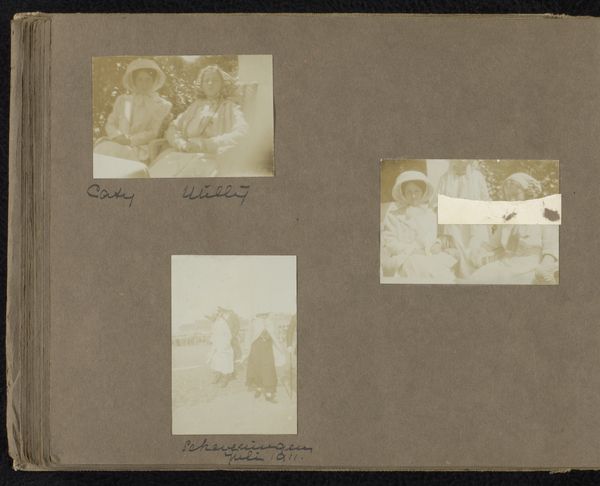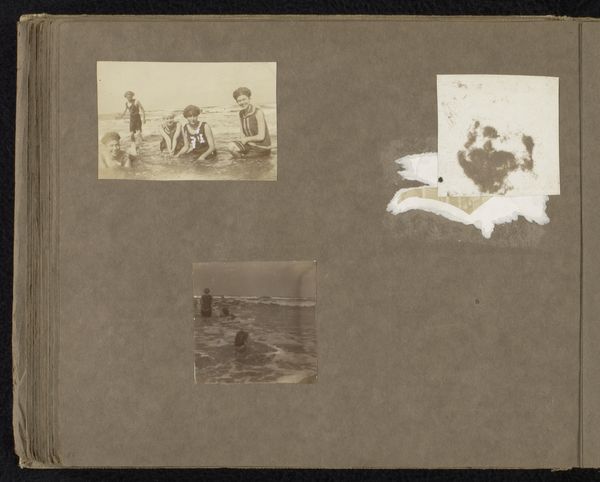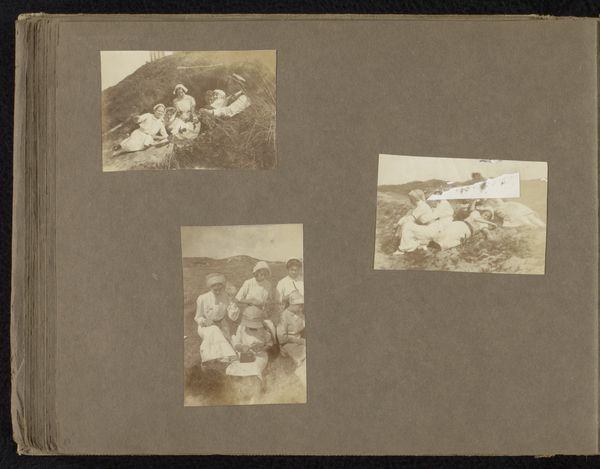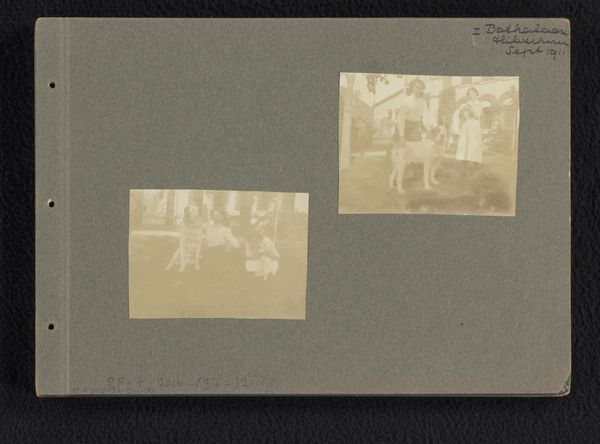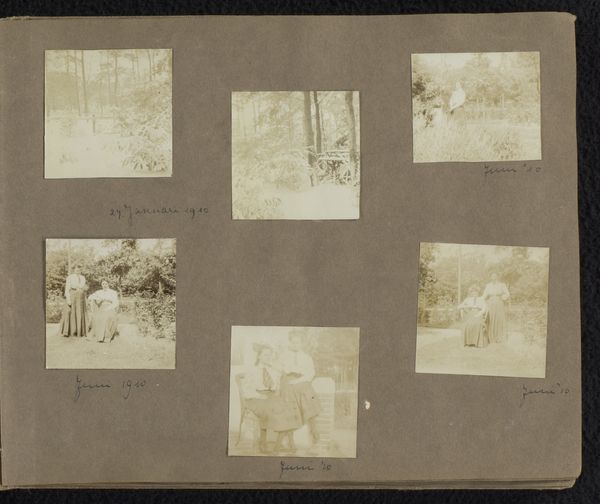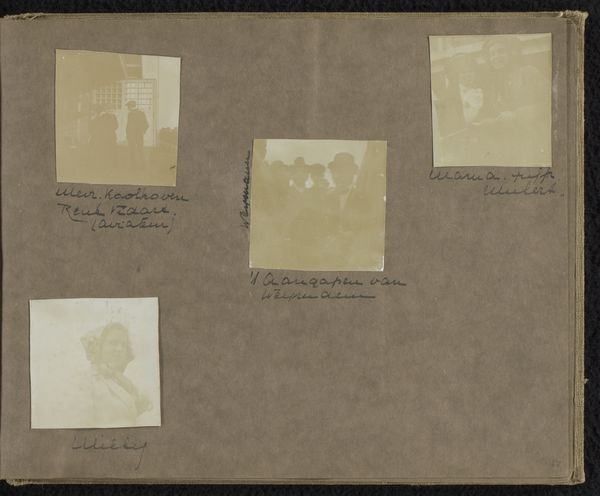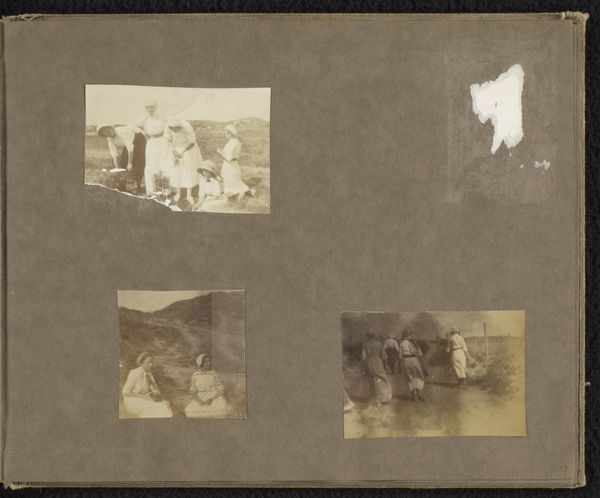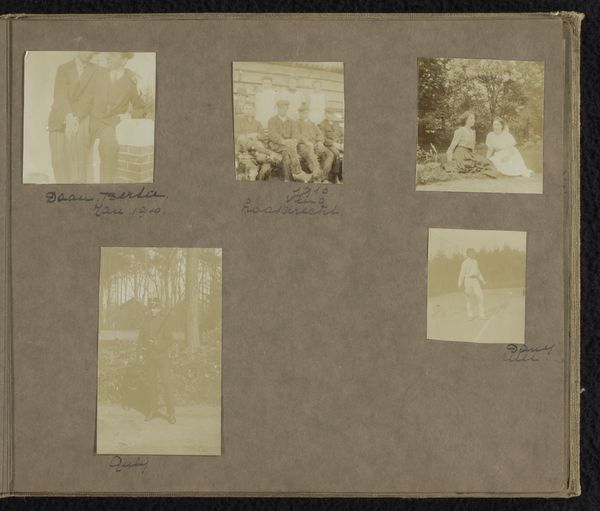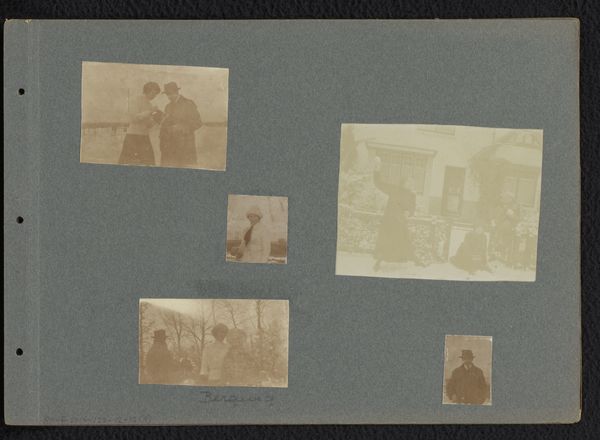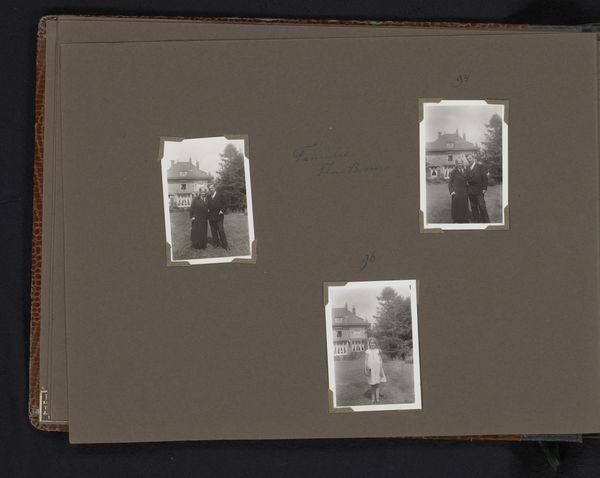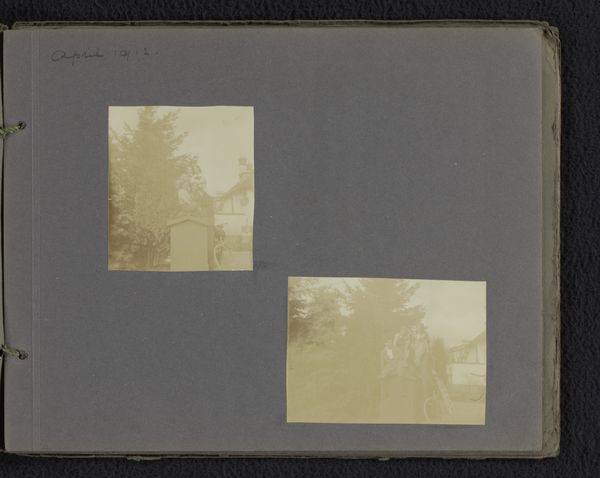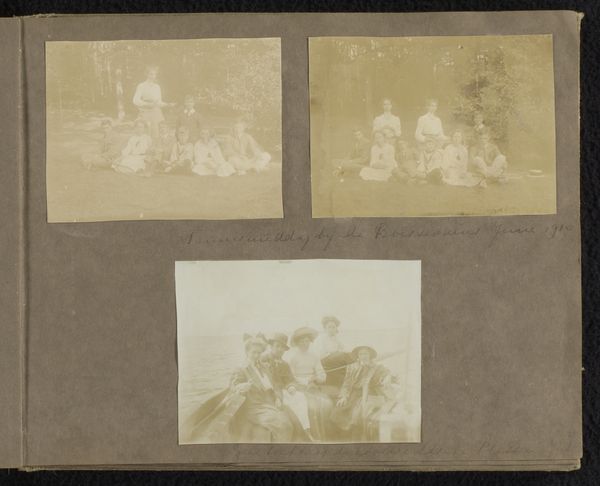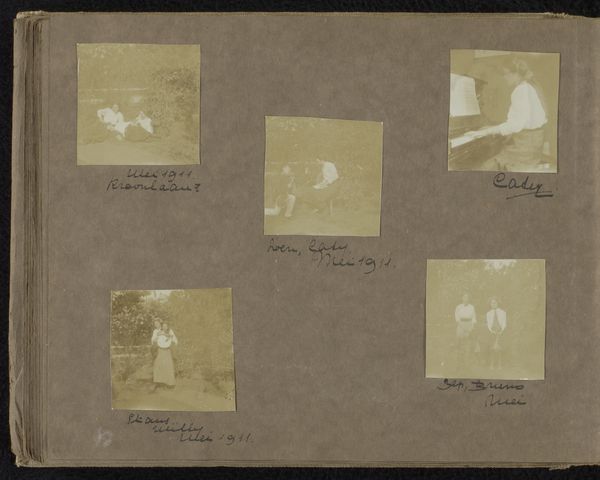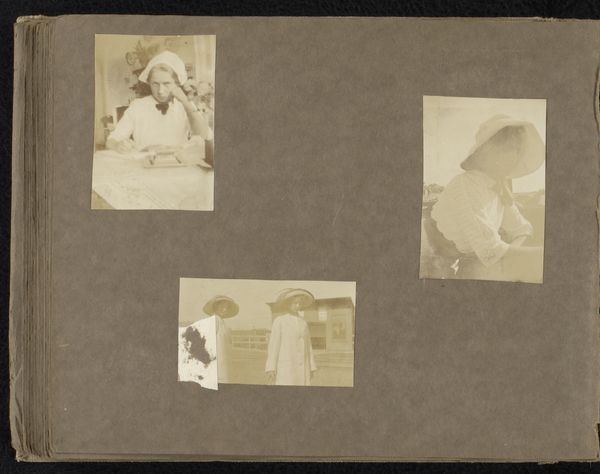
Dimensions: height 203 mm, width 253 mm
Copyright: Rijks Museum: Open Domain
Curator: Before us, we have "Four Photographs of a Vacation in Noordwijk" by Carolina (Loentje) Frederika Onnen, dating from 1911 to 1918. They’re albumen prints, capturing scenes of leisure. Editor: There's a wistful, melancholic feel to the compositions. The faded tones and candid snapshots lend them an air of faded memory. What do you make of the visual arrangements? Curator: Given Onnen's context as a woman photographer, it is compelling how these images construct and circulate a bourgeois vision of seaside leisure and domesticity in the early 20th century. The use of the albumen print is also significant because of the high cost of albumen materials at the time which meant it was mostly utilized by professional photographers. Editor: I notice how the light washes across the scenes, softening details and almost blurring the edges of the figures. I am curious about the varying textures of the photographic album and how the materiality speaks of loss due to how some of the photograph has faded in its tone over time. Curator: I think there is value in understanding the production of these images—the labor, materials, and even the act of collecting them into an album speak to a specific kind of social ritual. Onnen’s perspective frames the images through that cultural lens, shaping our understanding of family and gender. Editor: Absolutely, the family photographs are composed around a father figure; meanwhile the solo photo on the beach is of a single boy dressed in beachwear of the time. It really reflects the strict Victorian codes present throughout early twentieth-century artistic and material expressions. The composition seems deliberately fragmented due to the missing portion. Curator: The formal qualities of the prints – their sepia tones, soft focus – contribute to this nostalgic reading. However, it's worth acknowledging how their mass production allowed middle-class individuals to claim their space in visual culture. Editor: A point well made. It does allow for an open interpretation, considering this could be any young boy wearing a boater hat ready to play at the beach! What you’ve illuminated adds a layer of social awareness to an initial aesthetic interpretation of domestic idyll. Curator: It's in teasing out the relationships between the means of making, consumption, and intended audiences, that these photographs fully reveal their value and complexity, which can also serve to create nostalgia in an album for private viewership, later turned public. Editor: By focusing on the forms and cultural implications, we begin to notice something quite touching at work beyond the aesthetic presentation.
Comments
No comments
Be the first to comment and join the conversation on the ultimate creative platform.
